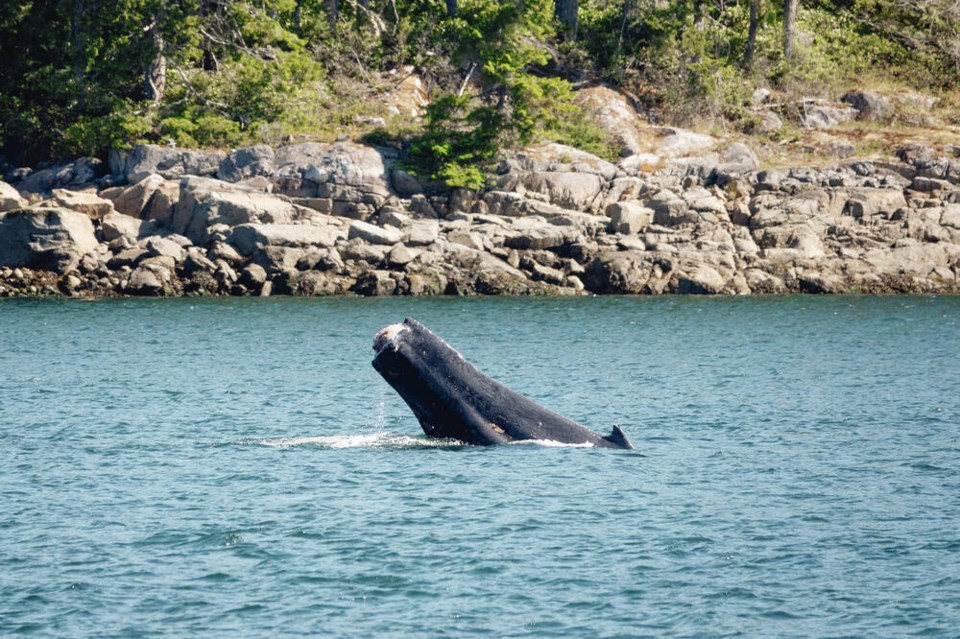A humpback whale missing its tail that was spotted recently off the Island’s coast is raising alarm about the impact of humans on humpbacks in B.C. waters.
Stephen Gabrysh, co-owner of Campbell River Whale Watching and Wild Coast Adventures, saw the animal on July 10 and noticed it was emaciated and exhibiting odd behaviour. It was moving slowly, spending a lot of time at the surface and doing partial dives, without bringing its fluke out of the water, he said.
Eventually, the whale completed a “more traditional humpback dive,” pulling its end out of the water, revealing a stump where its fluke should have been, Gabrysh said.
“It was devastating when I saw it. I just had never seen anything like that before and the whole boat, we were just sombre and quiet,” he said.
As the humpback population rebounds on B.C.’s coast after the end of commercial whaling in 1967, the impacts of humans on the whales is becoming more obvious, with animals caught in fishing gear and suffering vessel strikes, Gabrysh said.
Paul Cottrell, head of the Department of Fisheries and Oceans Marine Mammal Unit, was on the water Friday looking for the whale, last seen about three days ago, as well as another humpback that is currently entangled.
He’s hoping to get a better sense of the injury, which appears to be a fairly clean cut, he said. He’s unsure whether the injury is a result of an entanglement or a strike by a vessel or propeller.
The whale’s ability to dive, forage for food and migrate will be significantly impeded by the loss of its fluke, Cottrell said.
Cottrell said he has never seen a humpback missing its tail in B.C. waters, but he has heard of a couple of incidents elsewhere in which animals have survived, although not for long.
The injured humpback is a reminder to boaters to slow down to seven knots around whales and keep their distance, he said. Regulations prohibit boaters from getting closer than 100 metres from humpbacks and other whales, or 200 metres if they are resting or with a calf. The distance stretches to 400 metres for orcas between Campbell River and just north of Ucluelet.
Be Whale Wise, a partnership of governmental agencies, non-profits and other stakeholders in B.C. and Washington, provides more information on best practices to protect marine life.
Jackie Hildering, a humpback researcher with Marine Education and Research Society in Port McNeill, believes the whale’s fluke was severed as a result of entanglement, based on scarring on the animal.
She believes that rope or netting around the tail slowly constricted it until the fluke was lost, she said.
The society is collaborating on a study examining scars on humpbacks, which has shown that about half of all humpbacks on B.C.’s coast have scars from entanglement, Hildering said.
No one should ever try to cut a whale free on their own, because they could put themselves at risk and they will likely miss much of the entanglement below the surface, she said.
Anyone who sees a whale in distress, injured or dead should call DFO’s marine mammal incident reporting hotline at 1-800-465-4336 or use VHF Channel 16 as soon as possible. The faster the information is received, the better the chance, DFO staff can get to the animal to help, Cottrell said.
>>> To comment on this article, write a letter to the editor: [email protected]



